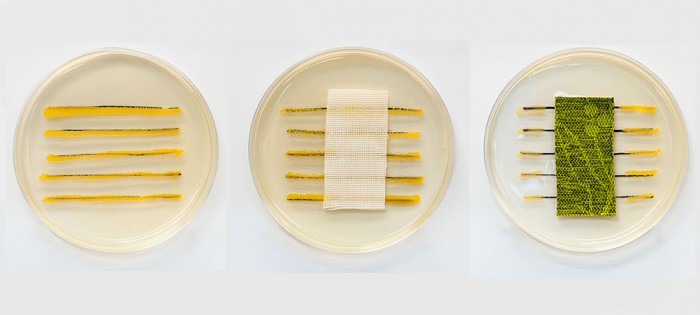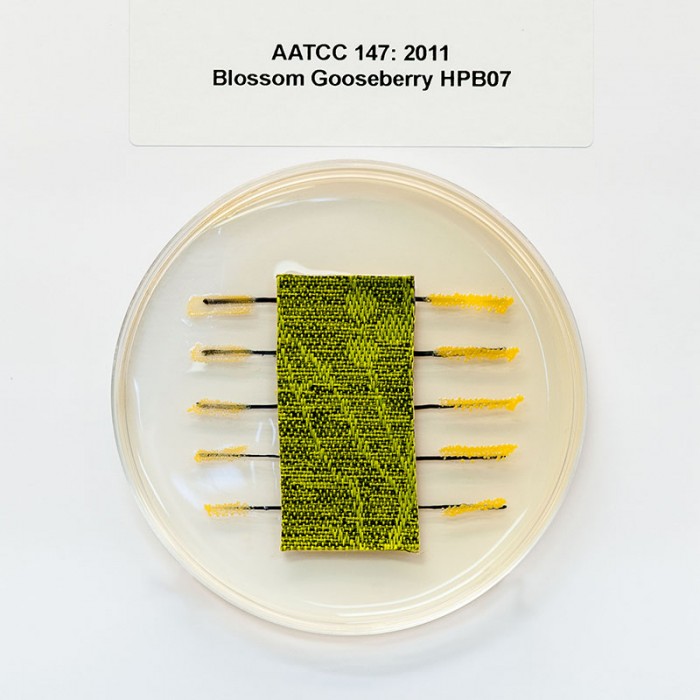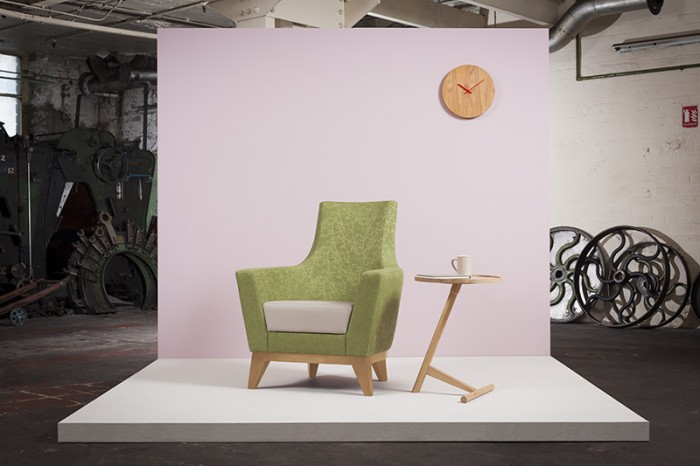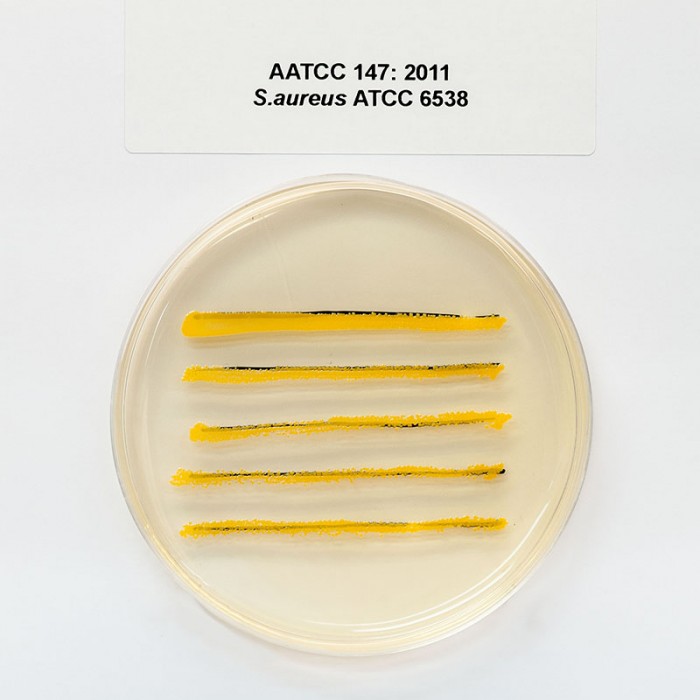Camira tells us “Choosing the right fabric could keep your care home germ free”
When choosing fabrics to adorn seating in a care home environment, like many people, you may think it’s more about style than substance.
Interior design is without doubt becoming a commercial priority for many care homes and care groups as they switch from old-fashioned institutional concepts to those with a more homely and luxurious feel.
The considered design of a care home interior not only exudes quality and a professional image but it can also contribute to the comfort and well being of the residents living within that space. Regardless of the need for a focus on aesthetics, and a less institutional look, every aspect of a care home has to be functional and enable a good standard of care. Seamlessly functioning in what are usually high traffic, high demand settings, requires low maintenance design solutions, and the ability to maintain and clean surfaces effectively – including fabrics!

Optimising cleanability without sacrificing design and comfort is ultimately the customers’ choice. Seating within care home environments is usually manufactured to order with the customer selecting which fabric the chair will be covered in.
Specialist healthcare fabrics are highly sophisticated engineered solutions. For many customers their first thought of specialist fabrics may conjure images of the ‘wipe and go’ vinyl. Although there is most certainly a place for vinyl within care home environments, it isn’t the only option when looking for cleanability, performance, and durability from a fabric. Accidents do happen and the cleaning up of bodily waste is generally a given situation in most care homes. When specifying fabric it makes sense to find the right product for the practical demands and time constraints staff are faced with.

Performance fabrics are now so advanced that aside from offering waterproof, stain repellent, and flame retardant properties, fabrics can also have a domestic appearance whilst providing an extra layer of protection from infection with germ proof anti-microbial products.
Before choosing fabrics for your care home think about removing the risk of exposure to nasty infections and bugs as well as the robustness required from a regular cleaning schedule.
Questions you should ask are:
How is the fabric waterproof? Does the fabric have anti-microbial treatment? How long will the fabric treatments last? Are the applied fabric treatments toxic? Will they cause allergic reactions? Has the fabric been tested? Is it easy to clean? Does it meet the required flammability standards – an essential requirement as it means the fabric meets with stringent safety requirements set by British Standards for use in public settings.
An anti-microbial treatment should be permanent, regardless of the number of times it is cleaned. Ask for reassurance that the fabric will still perform to infection control standards once it has been in use and cleaned.
If the fabric isn’t post treated to make it waterproof – preventing water passing through to the foam – it isn’t waterproof – unless it’s vinyl. Again ask for reassurance.

One textile company that has pioneered their own concept of anti-microbial fabrics is Yorkshire based textile manufacturer Camira.
As a result of extensive research conducted with NHS Trusts and their cleaning staff, Camira have used intelligent design to combat the opinion amongst cleaning staff that fabrics in healthcare settings lack cleanability due to the weave retaining substances in the grooves.
As a result of the research Camira designed and now manufacture three completely flat weaves, Blossom, Aspen, and Linden, which are tight and scrubable and treated with a permanent germ free solution branded in-house called TriOnyx.

The treatment consists of an anti-microbial and anti-fungal treatment called mædical™ to deactivate micro-organisms, including the bacteria that causes MRSA, salmonella, Aspergilus Niger, Penicillum, E. coli, and Cladosporium herbarum. It then receives, a kinder to the environment, stain repellent treatment before bonding to an impervious waterproof PU membrane, which means any spills or accidents do not seep through to the structure or foam within the chair.
During further testing and research Camira were asked to provide reassurance that healthcare fabrics treated with the TriOnyx system would still perform to infection control standards once they had been in use (stained/soiled) and cleaned.
It was decided that a used/soiled chair would be returned for trialling. It’s worth mentioning seating shouldn’t be allowed to become heavily soiled. For the sake of comfort, hygiene, and safety, the recommended cleaning guidelines should always be followed and as swiftly as possible after an accident.
Two measurable standards were agreed. After cleaning the fabric would still perform to being:
• Waterproof (Hydrostatic Head) – Measured by test method BS 3424 Part 26 Method 29A
• Antimicrobial – Measured by test method AATCC 147
Using a warm water solution with standard upholstery cleaner the solution was applied to the fabric and then removed. A moderate amount of water was used and the whole area was wetted out due to the level of soiling. The cleaning took approximately 5 minutes to complete. The chair was left to dry overnight.
After cleaning, the fabric was noticeably cleaner without soiling. The sample was also unpicked and noted that the white flocked backing showed no evidence of water penetration from cleaning and there was no disturbance to the waterproof film.
The independent testing passed against both performance criteria:
• Anti-bacterial – no growth on or around the sample
• Hydrostatic head – no penetration at the volume of water representing 2m, which exceeds the industries, ‘pass’ criteria of 1m.

Camira’s specialist performance finish healthcare fabrics have been designed and engineered specifically for safety and cleanability. The anti-microbial and flame retardant properties are permanent and not affected by cleaning. The finish is completely waterproof. The stain repellent provides extra time to tackle liquid spillages by an added element that promotes a beading action.
Even though tough textiles can provide comfort and time saving assistance for care staff, fabrics still need TLC to keep them in top condition and looking their best. A regular care and maintenance routine will still be needed for the fabrics to continue to look good, perform well, and protect for longer.
Ensure you regularly vacuum the fabric to remove crumbs, dust, and dirt. Soak up spills as quickly as possible, blotting the area using a dry absorbent cloth.
Persistent stains can be cleaned with a damp cloth or upholstery shampoo but never leave soap or cleaning fluid residues on the fabric surface or fully immerse, or ‘wet out’ the fabric. Steam cleaning and solvent based cleaners are not recommended either, this form of cleaning will eventually damage the fabric and ultimately its long-term performance.
You do have to be realistic. Soft and comfortable fabric doesn’t have to mean problems or hard work for staff, but it is important to consider many factors when choosing products and services that will be suitable for the demands of a care home environment.
The same considerations should apply to your fabric choices. Whether you want to scrub it, wash it or just wipe it down quickly, fabrics that provide safe, practical and beautiful upholstery solutions are out there working hard for you.
You can see Camira Fabrics at The BCFA Open in Manchester, Register below.





